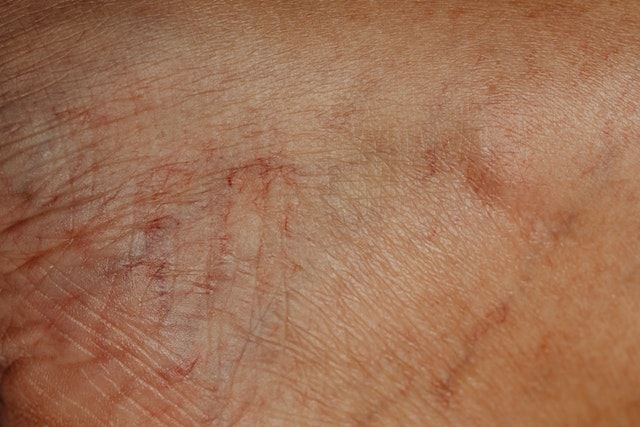Spider veins and varicose veins are two common venous conditions that can cause discomfort and self-consciousness. While these conditions may appear similar, they have distinct characteristics and treatments. In this blog post, we’ll explore the key differences between spider veins and varicose veins.

Spider Veins: The Intricate Networks
Spider veins, also known as telangiectasias, are small, dilated blood vessels that appear close to the skin’s surface. They are often red, blue, or purple and resemble a spider web or branches of a tree. Commonly found on the legs and face, spider veins are primarily a cosmetic concern, although they can cause mild discomfort such as itching or burning.
Varicose Veins: The Bulging Enigma
Varicose veins are larger veins that are twisted, swollen, and often bulge from the skin’s surface. They are typically blue or purple and frequently develop on the legs. Varicose veins are a result of damaged valves that allow blood to flow backward and pool within the veins. This pooling causes increased pressure and enlargement of the veins, leading to their characteristic appearance.
Key Differences
While spider veins and varicose veins may share some similarities in appearance, there are significant differences between the two:
Size and Appearance
Spider veins are small and thin, measuring less than a millimeter in diameter. They appear as fine lines or clusters of vessels close to the skin’s surface.
Varicose veins, on the other hand, are larger and more noticeable. They often protrude from the skin, giving them a twisted and bulging appearance.
Symptoms
Spider veins are generally not associated with pain or discomfort, although some individuals may experience mild itching or burning.
Varicose veins can cause a range of symptoms, including aching, throbbing, heaviness, and pain. Individuals with varicose veins may also experience leg fatigue and swelling.
Severity
Spider veins are typically a cosmetic concern and don’t usually indicate an underlying medical issue.
Varicose veins can be indicative of underlying venous insufficiency, a condition where the veins struggle to return blood to the heart efficiently. This can lead to more serious health issues if left untreated.
Treatment Options
 Both spider veins and varicose veins can be treated effectively with various minimally invasive procedures. Common treatments include:
Both spider veins and varicose veins can be treated effectively with various minimally invasive procedures. Common treatments include:
- Sclerotherapy: A solution is injected into the affected vein, causing it to collapse and fade over time.
- Laser Therapy: Laser energy is used to target and seal off the affected veins.
- Radiofrequency Ablation (RFA): A catheter delivers radiofrequency energy to heat and close the vein.
- Endovenous Laser Treatment (EVLT): A laser fiber is inserted into the vein to heat and seal it shut.
Spider Veins vs. Varicose Veins: Contact Dr. Norman Chideckel for Vein Treatment
If you’re experiencing discomfort or concerns related to spider veins or varicose veins, Dr. Norman Chideckel at the Vascular Surgery & Vein Center in New York City can help. With years of experience, Dr. Chideckel offers a range of personalized treatment options to address your unique needs.
To schedule a consultation, contact us at:
Vascular Surgery & Vein Center
Dr. Norman Chideckel
108 East 96th Street, Front 1
New York, NY 10128
Phone: 212-993-6133


